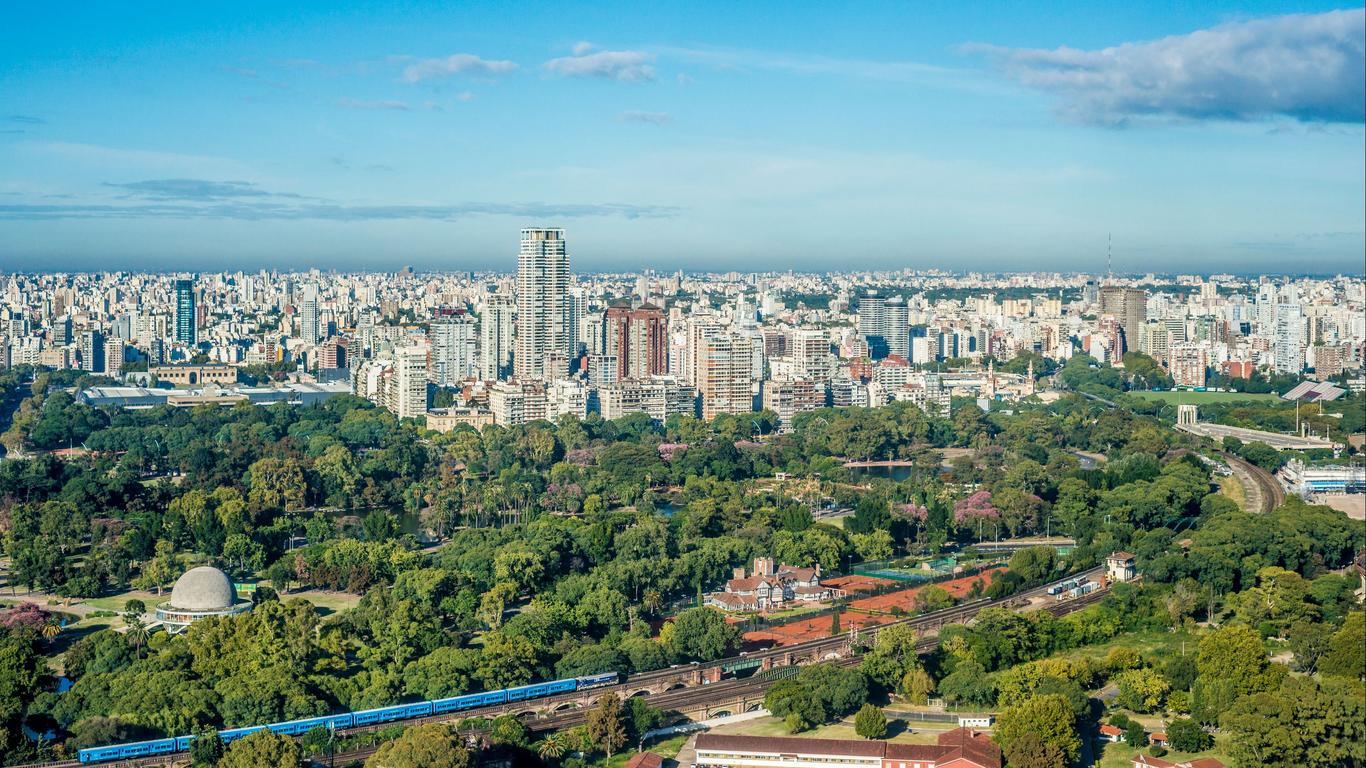Located in the north-west of Buenos Aires along Rio de la Plata is the leafy residential neighbourhood of Palermo. It is the largest barrio in Buenos Aires and is divided into numerous sub-neighbourhoods which each have their own distinct atmosphere.
Palermo Chico in the north-east is home to some of the barrio’s most exclusive residential addresses, as well as international embassies and the Museum of Latin American Art in Buenos Aires. It’s just a short walk from Los Bosques de Palermo, or the “Palermo Forest”, home to Japanese Gardens, a Planetarium dedicated to Galileo Galilei, the Eduardo Sívori Museum and the iconic Monumento de los Españoles. To the south are the picturesque Botanical Gardens and Plaza Italia which leads towards the Bohemian hub of Palermo Viejo. It is renowned for its Spanish Colonial Revival-style architecture and once the address of Jorge Luis Borges and Che Guevara. Playful murals and street art adorn the buildings, while trendy cafes and designer boutiques abound in what has become known as Palermo Soho. It’s home to Plaza Palermo Viejo and Plaza Serrano which both boast eclectic street fairs, while the adjacent area has been dubbed “Palermo Hollywood” due to its high concentration of TV and film production studios. Alto Palermo is the barrio’s main commercial and transport hub on its eastern edge, while Villa Freud clusters around Plaza Güemes and is renowned for its high concentration of psychiatrists. Palermo Norte is where the National Museum of Decorative Arts and the Argentine Automobile Club can be found, while nearby is Las Cañitas, home to the elaborate architecture of the Parroquia San Benito Abad.
Palermo is well connected along the Buenos Aires Subway which has several stations in the district, as well as by four different commuter train lines. Public buses also serve the area, although its tree-lined streets and leafy parks make it a pleasant neighbourhood to explore on foot.
The barrio is thought by most to be named for the Franciscan abbey of Saint Benedict of Palermo, although some believe it was named for an Italian immigrant, Juan Domingo Palermo, who bought land here in the late 16th century. It grew rapidly during the presidency of Domingo Faustino Sarmiento who established the Plaza Italia and Buenos Aires Zoological Garden here during his 1870s rule.





